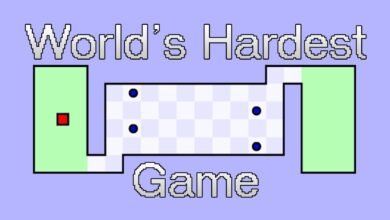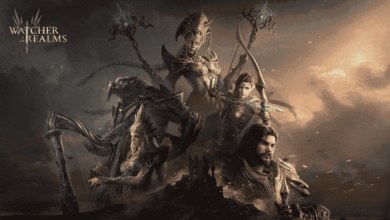
Power Stone 2: The Ultimate Dreamcast Fighting Guide
Power Stone 2 is a classical 3D fighting game exclusively for Sega Dreamcast developed by Capcom. This game is developed as a sequel to the original Power Stone and it took the franchise to the next level by introducing the expanded player options, dynamic interactive stages, and the enhanced weapon system. Released in 2000, Power Stone 2 remains one of the most beloved party fighting games of all time.

In this guide, we’ll explore everything about Power Stone 2, from gameplay mechanics and character roster to the unique stage designs and its lasting legacy in gaming.
Gameplay Mechanics
Power Stone 2 keeps the basic principles of the first version and adds clear supplements of these mechanics, they are creating one of the most despicable and interesting players on the video game Dreamcast the game becomes.
Combat System
In contrast to the routine 2d battle games, here is one with different characters and the 3d ground that makes players freely move around. A game of up to four members reinforces the feeling of interaction when you fight your way, thus raising adrenaline by its unusual speed and agility.
Basic Attacks: Players can punch, kick, and throw opponents using a simple control scheme.
Weapon System: One of the main points of this game is the fact that you can pick up and use so many different weapons, such as swords, bazookas, flamethrowers, and hammers.
Transformation Mechanic: When a character gets three Power Stones, he or she can turn into a powerful super form, which will let them launch the special moves by hitting the enemies.
Stage Hazards: Stages are populated by environmental hurdles such as falling platforms, moving traps and other challenges that require the player to think through it.
Multiplayer Madness
Power Stone 2 is best enjoyed in multiplayer mode, supporting up to four players simultaneously. The game features several modes:

- Arcade Mode: A standard progression through different battles leading to a final boss.
- Adventure Mode: A mode that allows players to collect items and weapons to use in battles.
- Versus Mode: Free-for-all battles that support up to four players.
- Item Shop: Players can combine collected items to create new weapons and power-ups.
Character Roster
The sequel to Power Stone 2 has much more characters than the original. They all have their own unique ways of fighting and different powers that make them unique in battle.
Returning Characters
Edward Falcon – A skilled aviator with a balanced fighting style.
Rouge – A fortune teller with mystical abilities.
Wang-Tang – A martial artist inspired by classic kung-fu fighters.
Ryoma – A skilled samurai warrior.
Ayame – A fast and agile kunoichi (female ninja).
Gunrock – A powerhouse with incredible strength.
Jack – A mysterious and sinister knife-wielding fighter.
Galuda – A native warrior with brute force.
New Characters
- Accel – A bounty hunter with high-speed attacks.
- Julia – A fierce warrior known for her acrobatics and quick reflexes.
- Gourmand – A rotund chef who uses food-related attacks.
- Pride Falcon – A futuristic variation of Edward Falcon with enhanced moves.
- Mel – A hidden character with unique transformation abilities.

Stages & Environments
Power Stone 2 revolutionized stage design by introducing dynamic environments that change during battle. Some key stages include:
Floating Ruins: A crumbling ancient ruin that collapses mid-battle.
Ocean Liner: A ship that starts intact but gradually sinks into the ocean.
Wild West Town: A frontier town with moving mine carts and collapsing buildings.
Giant Clock Tower: A rotating stage with shifting platforms and time-based hazards.
Airship: A flying fortress that changes altitude, affecting movement and attacks.
These ever-changing environments add unpredictability and strategy, making each battle unique.
Weapons & Items
A major aspect of Power Stone 2 is the variety of weapons and items players can use. Some notable examples include:
- Swords & Blades: Enhance close-range combat.
- Bazookas & Guns: Allow long-range attacks.
- Flamethrowers & Bombs: Create explosive attacks.
- Shields & Armor: Provide defensive capabilities.
- Healing Items: Restore lost health during battles.
The mixing and matching of various weapons is what gives the game an added layer of complexity and depth, as well as making the players have the idea of attacking the enemy solely through long-range methods or through melee combat only.
Legacy & Impact
Even though it is an all-time favorite, Power Stone 2 did not have a direct sequel. Still, it makes sense a lot if we take a look at various modern fighters and brawlers that have been influenced by it. A few years later, it was re-released as part of the Power Stone Collection for the PSP in 2006, which was actually the first time the game was ever released. In so doing, it got to play for or introduce a good time to young players who were newer and were not familiar with its fun&
Why Power Stone 2 Is Still Loved Today
Unique Multiplayer Combat: Few games offer the same level of engaging 3D brawler mechanics.
Innovative Stage Design: Interactive and evolving stages keep battles exciting.
Diverse Character Roster: A mix of classic and new characters with distinct playstyles.
Endless Replayability: The item system and multiplayer battles ensure hours of fun.
Conclusion
Power Stone 2 is the still the fans’ favorite and the evergreen game that still attracts the majority of fighting game fans. It is not only a blast of a game to play with its interactive environments, chaotic battles but also oozes deep combat mechanics to give us memories of times when computer games were the multitaskers of entertainment at a time when we had nothing better to do. With the bright summer just around the corner, anyone who is involved can play without feeling bored at such an unordinary time. Whether you are a die hard fan or a novice, Power Stone 2 is a must play for any party brawler game lover.




